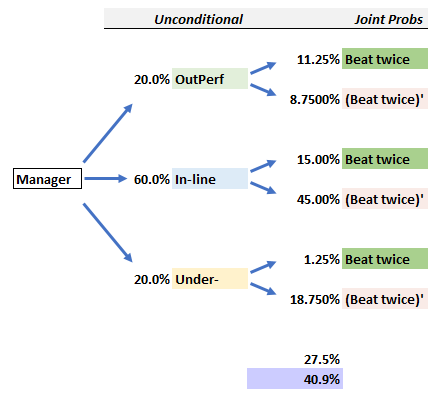Hi David, This question is from P1.T2 pg 105.
Sample Problem #1: Suppose there are three types of managers: the underperformers beat the market only 25% of the time, the in-line performers beat the market 50% of the time, and the outperformers beat the market 75% of the time. Our prior belief is that a manager has a 60% probability of being an in-line performer, a 20% chance of being an underperformer, and a 20% chance of being an outperformer. If the manager beats the market two years in a row what should our updated beliefs be?
Can you please help with the solution to above using Decision tree approach (Not using formula). Appreciate it.
Sample Problem #1: Suppose there are three types of managers: the underperformers beat the market only 25% of the time, the in-line performers beat the market 50% of the time, and the outperformers beat the market 75% of the time. Our prior belief is that a manager has a 60% probability of being an in-line performer, a 20% chance of being an underperformer, and a 20% chance of being an outperformer. If the manager beats the market two years in a row what should our updated beliefs be?
Can you please help with the solution to above using Decision tree approach (Not using formula). Appreciate it.
Last edited:

